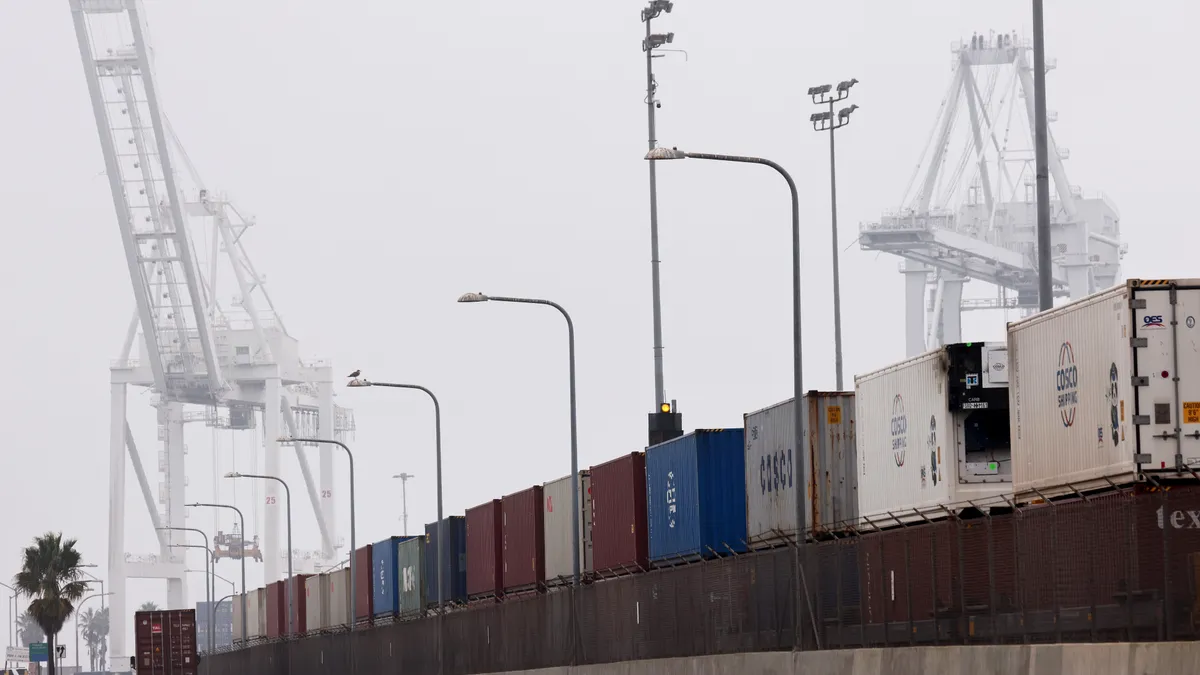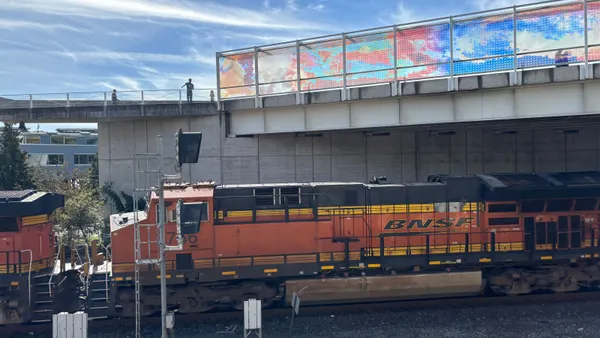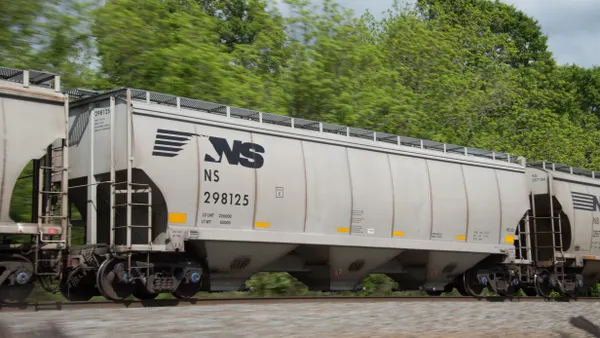Dive Brief:
- The four largest U.S. railroads will be required to provide federal regulators with weekly updates over the next six months detailing their plans to restore service and rebuild their workforce, according to a rule issued by the Surface Transportation Board on Friday.
- Union Pacific, BNSF, CSX and Norfolk Southern must provide metrics and goals in their reports tied to certain performance indicators, including hiring and service during the first and last mile. The board is also asking the railroads to participate in calls with regulators every other week.
- The rule comes after major shippers including Molson Coors and Cargill described escalating challenges with rail service during a federal hearing last month, noting instances of production shutdowns due to unfilled orders, a lack of rail workers and other disruptions.
Dive Insight:
The STB's new reporting requirements are meant to give the agency a more up-to-date look at "the extent and location of the acute service issues and labor and equipment shortages," the board wrote in its ruling. The board will use the data provided over the next six months to assess whether further regulation is warranted.
Railroads will be required to outline short-term recovery goals tied to key service performance indicators. While carriers can choose which indicators to focus their plans around, they must minimally include goals and data related to trip plan compliance in addition to service performed during the first and last mile. Railroads are also encouraged to provide progress reports on hiring and retention during the onboarding process
Rail service delays have disrupted shipper operations and are contributing to congestion at ports. Rail bound cargo at the Port of Los Angeles, for example, has increased sixfold over the last two months and "is not moving off our terminals fast enough," Gene Seroka, the port's executive director, said in a media update Friday.
"Rail boxes are currently waiting nearly six days to get on a train. That's triple the dwell time compared to pre-pandemic dates," said Seroka. "We're the nation's busiest port complex and, simply put, we need more rail assets in place."
Beyond the service recovery plans, the STB is also requiring carriers submit weekly data over the next six months on metrics such as the number of trains canceled and the percentage of cars "constructively or actually placed at destination within 24 hours of the original estimated time of arrival," according to the rule. Railroads must also provide monthly updates on total employee count, breaking it down by the number of employees in training and the number of employees furloughed but potentially available for a recall.
STB Chairman Marty Oberman said in a statement that current service declines have contributed to inflated consumer prices across the country and is in part due to "railroads’ longstanding practice of reducing operating ratios by cutting employment levels, mothballing locomotives, and eliminating other essential resources."
"Today’s decision is an immediate step the Board can take to enable needed monitoring of the improved efforts the railroads have been promising for months, and to determine if additional regulatory steps are necessary to promote reliable service," he said.















